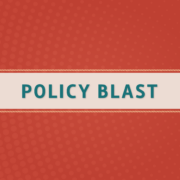ENERGY AND COMMERCE COMMITTEE MARKS UP BILL INCLUDING URBAN INDIAN ORGANIZATIONS
The mark up is the Committee’s portion of the Build Back Better Act
Washington, D.C. -The Energy and Commerce Committee, led by Chairman Frank Pallone, Jr. (NJ-06), met on September 13 -14 to mark up their portion of the Build Back America Act. Bills for committee markup included issues tackling the affordability of healthcare and prescription drug costs, closing the Medicaid gap, expansion of services for seniors and those with disabilities and critical in investments in public health and preparedness following the breakdowns during the COVID-19 pandemic.
“The Build Back Better Act is transformational legislation that invests in the American people, responds to the challenges of our time, and builds back a better future for generations to come” said Chairman Frank Pallone, Jr. (NJ-06).
Committee Mark Up Highlights
Key Components
- $50,000,000 for funding to grow and diversify the doula: Workforce grants to health professions schools, academic health centers, State or local governments, territories, Indian Tribes and Tribal organizations, urban Indian organizations, or other appropriate public or private nonprofit 7 entities (or consortia of entities, including entities promoting multidisciplinary approaches), to establish or expand programs to grow and diversify the doula workforce
- $75,000,000 for grants to health professions schools, academic health centers, State or local governments, territories, Indian Tribes and Tribal organizations, urban Indian organizations, or other appropriate public or private nonprofit 14 entities (or consortia of entities, including entities promoting multidisciplinary approaches), to establish or expand programs to grow and diversify the maternal mental health and substance use disorder treatment workforce.
- $2,500,000,000 for community violence and trauma interventions. Competitive grants or contracts to local governmental entities, States, territories, Indian Tribes and Tribal organizations, urban Indian organizations, hospitals and community health centers, nonprofit community-based organizations, culturally specific organizations, victim services providers, or other entities as determined by the Secretary (or consortia of such
- entities) to support evidence-based, culturally competent, and developmentally appropriate strategies to reduce community violence, including outreach and conflict mediation, 19 hospital-based violence intervention, violence interruption, and services for victims and individuals and 21 communities at risk for experiencing violence, such 22 as trauma-informed mental health care and counseling, school-based mental health services.
- Includes $15 billion in new investments for pandemic preparedness and $3 billion to establish the Advanced Research Projects Agency for Health (ARPA-H).
Bill Mark Up Summary
“Comprehensive Plan for Addressing High Drug Prices: A Report in Response to the Executive Order on Competition in the American Economy” -released by Health and Human Services Secretary Xavier Becerra
Key Components
- Makes drug prices more affordable and equitable for all consumers and throughout the health care system-support drug price negotiation with manufacturers and stop unreasonable price increases to ensure access to drugs that can improve health for all Americans
- Improves and promotes competition throughout the prescription drug industry – Support market changes that strengthen supply chains, promote biosimilars and generics, and increase transparency
- Fosters scientific innovation to promote better health care and improve health – Support public and private research and make sure that market incentives promote discovery of valuable and accessible new treatments, not market gaming
- Subtitle F: Budget Reconciliation Legislative Recommendations Relating to Affordable Health Care Coverage
Key Component:
- Ensures affordability of coverage for certain low-income populations by expanding the Affordable Care Act (ACA) premium tax credits to below 100% of the federal poverty level in 2022 through 2024 and reduce cost sharing for these individuals as well.
Key Component:
- Establishes a federal Medicaid program by 2025 in states that have not yet expanded their programs under the ACA.
Key Component:
- Permanently extends the Children’s Health Insurance Program (CHIP); require continuous twelve-month coverage for children in Medicaid and CHIP; and make permanent one full year of postpartum Medicaid coverage for pregnant women.
Key Components:
- Energy and Commerce text includes provisions analogous to the House Ways and Means Committee with addition of dental, hearing and vision benefits to Medicare.
- $190 billion proposal for investment in home and community-based services (HCBS).
Next Steps
Markups are scheduled to be completed next week. Members will then begin to package them into one bill for consideration in the House. Timing of that vote is uncertain, but the target is to complete this by the September 27 agreed upon date to consider it in tandem with the bipartisan infrastructure package.[1]
[1] Updates on Budget Reconciliation; HHS Drug Pricing Proposal (natlawreview.com)







Leave a Reply
Want to join the discussion?Feel free to contribute!